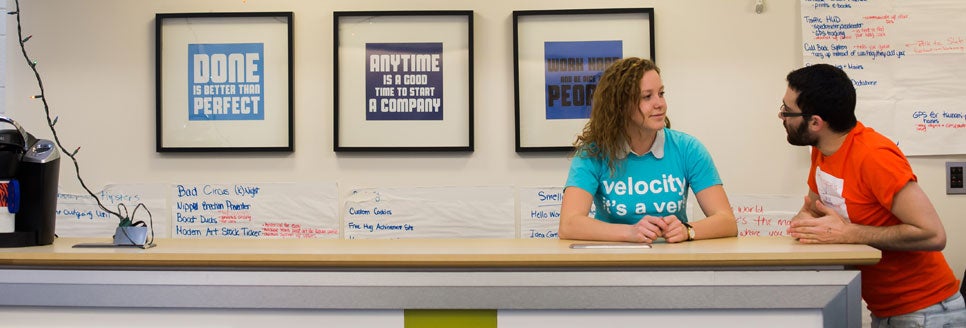
If you live or work in a mid-sized city in Canada, chances are that it has a university. When cities and regions look to promote, market and brand themselves for tourism or economic development, their universities always make the list as a key asset to the city’s identity. This is not surprising. Sometimes it is due to the long-standing historical ties between a university and the city, typical town-gown relations; more likely, cities are appreciative of the annual influx of thousands of students to their respective regions. In other cases, universities are seen to generate innovation, research and new knowledge. But how well do we retain this talent and innovation?
During my time in the University of Waterloo’s Local Economic Development master’s program, I became interested in the many ways in which universities contribute to the economic prosperity of a region and set out to explore this issue in greater depth. As many economic development practitioners know, delving into the economic impact of anything can lead you down a rabbit hole of direct, indirect and induced impacts. The same is true when it comes to universities. While my study could have taken me in a multitude of directions, one of the most interesting economic development indicators I studied was that of university-born start-up and spin-off companies.
Most research-driven universities have a process of formal technology transfer: the process of taking student and faculty research to either commercialize or license the results of their research for use by the appropriate industry. Some universities do a better job than others, and this relates to a number of reasons, including the amount of research funding they receive from various public and private sources. More recently, universities have recognized the need for greater institutional support for entrepreneurship and innovation amongst its graduate and undergraduate students. To this end, universities have begun to create incubators or accelerators that help students take their ideas and research and to establish viable businesses.
It was in this area that I observed the greatest disparities in results. Universities that not only encouraged entrepreneurship amongst their students, but provided them with the tools and resources to do so, saw the greatest success.
For example, Western University’s BizInc, an on-campus student business incubator provides students with resources, advice, support, and access to funding. Since its formation in 2011, BizInc has created 47 operating firms, 96 jobs and $2 million in economic impact. They have not created this success in isolation, but have partnered with others in the community such as the London Economic Development Corporation and the London Small Business Centre.
Closer to where I studied, the University of Waterloo promotes student entrepreneurship in many ways. One of the best examples is the Velocity Campus. The campus gives entrepreneurial students access to practical skills and hands-on workshops. Velocity also incorporates its own residence into the program to encourage collaboration between students. In 5 years, Velocity reports that over 45 companies have been established. This success has inspired St. Paul’s University College, an affiliated college at the University of Waterloo, to create its own incubator, focusing on social and environmental issues as opposed to the broader technology focus at Velocity. In the first 12 weeks of the program they report that students have produced over 50 innovative ideas for change and 5 early-stage social enterprises have been created.
These are just two examples of universities promoting entrepreneurship and innovation. The types of programs described above are some that universities can embrace and promote if we—as economic development practitioners—wish to retain the talent and innovative ideas created at our universities. It is important for economic development practitioners to foster and maintain close connections with these important local institutions. Universities are key sources of employment, human capital, and innovative ideas; and, unlike most businesses and organizations, they will be around for a very long time.
Encouraging startups and an entrepreneurial spirit within our cities, regions and academic institutions is an opportunity too valuable to be missed!
About the Author
Sarah Franklin is a recent graduate of the University of Waterloo’s Master’s Program in Local Economic Development. Her Major Research Paper is titled: Universities and Regional Economic Impacts in Canadian Mid-Sized Cities: A Study of Saskatoon, Saskatchewan and London, Ontario. While in the program, she studied a broad range of local economic development issues from both a rural and urban perspective. Sarah has just completed a contract working with Downtown London, one of Canada’s leading BIA and downtown revitalization organizations and is looking forward to the next opportunity in her economic development career.
Email: sarah.franklin@live.ca
Twitter: @safrankl
About the series
Higher ED: Ivory Tower Insights for Economic Development Professionals was conceived as a way to share research completed by Local Economic Development (LED) students at the University of Waterloo. It features blog articles by current and recent LED students with cutting-edge insights.
Established in 1988, the LED program is the only master’s program in Canada devoted solely to local economic development. It offers a balance between theory and practice by combining coursework, a major research paper, an internship, and weekly seminars featuring guest speakers. Students are prepared for careers in local, community, or regional economic development.